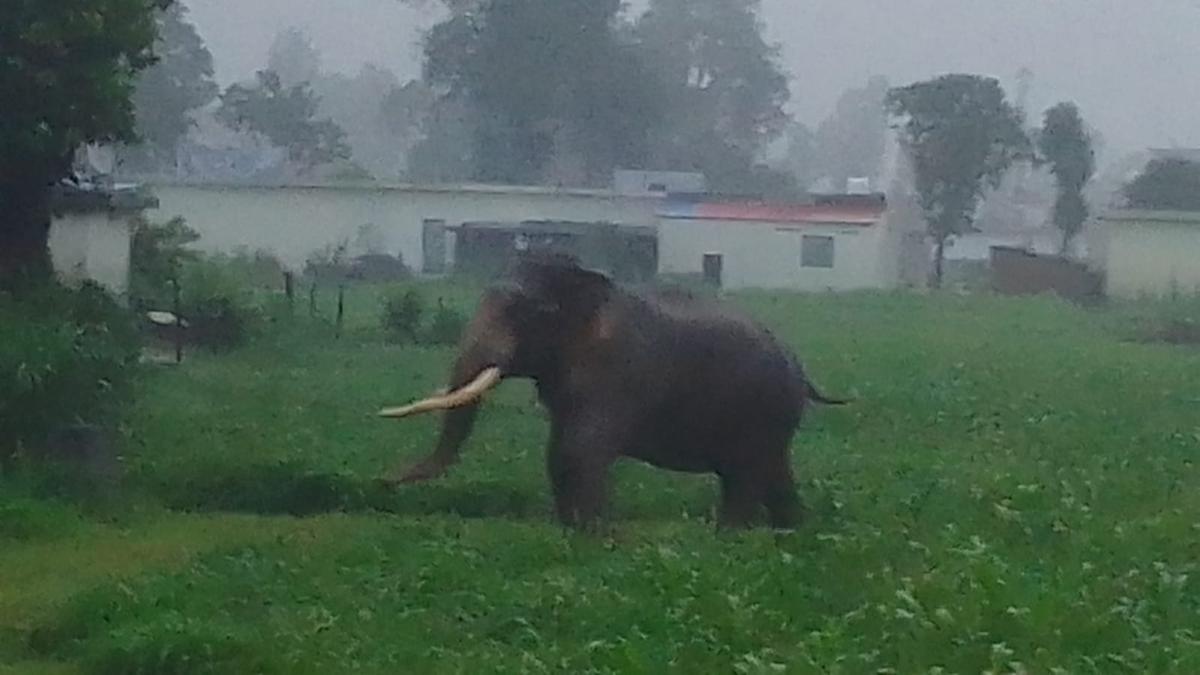
Off late, a uncommon prevalence has been noticed with a set of elephants having began to make a beeline within the hill State of Himachal Pradesh from the neighbouring forests of Uttarakhand. In response to the motion of those tuskers began to extend prior to now couple of years, which gave rise to the human-elephant battle, ‘Project Elephant’ made its debut in Himachal Pradesh.
Over the years, human-elephant battle has turn out to be a serious conservation concern, and has posed a problem for elephant administration throughout components of India. Recently, the same scenario began to emerge in Himachal Pradesh as effectively. To cope with the scenario, the ‘Project Elephant’ has now been launched within the State – aimed toward defending the habitat and corridors of elephants, whereas additionally safeguarding human lives, their livelihood, and their properties, and within the course of minimising human-elephant battle.
In the previous, there was remoted or uncommon motion of elephants from Rajaji National Park in Uttarakhand to neighbouring forests of Himachal Pradesh. However, prior to now two or three years the variety of tuskers travelling to Himachal has gone up. While this has introduced pleasure for wildlife fanatics it has additionally induced a lot fear for the native populace.
Traditionally, the motion of elephants has been largely concentrated in areas comparable to Kaunch Valley and different areas near the river Yamuna, which runs between the borders of Himachal Pradesh and Uttarakhand. In the previous two years, nevertheless, the jumbos may very well be seen frequently and in elevated numbers within the Majra and Girinagar areas of Paonta Sahib territorial division, and Kolar and Nahan ranges of Nahan division within the Sirmour district of Himachal Pradesh, coming from the Rajaji National Park in Uttarakhand. According to the wildlife wing of Himachal Pradesh Forest Department, near a dozen elephants had been persistently strolling within the state’s territory falling in Sirmour.
These jumbos normally transfer between Rajaji National Park-Chakrata-Colnel Sherjung National Park (Simbalbara)-Paonta-Nahan ranges, and additional to Kalesar in Haryana at instances. The distance they’re travelling is invariably near 40 kilometres from Uttarakhand’s forests, which native wildlife officers contemplate as a ‘long distance’ motion.
These elephants normally cross over to Himachal when there’s a lowered water degree in Yamuna. While there may be not one clear cause behind the elevated motion of tuskers in the direction of the forests in Himachal, wildlife consultants assert that the rising human imprints throughout the ‘elephant corridors’ have resulted in a habitat loss for the elephants, pushing them to seek out new areas.
The increasing human habitation, encroachments, and development actions comparable to road-railway tracks are a couple of causes that adversely influence the motion of elephants and create disturbances of their dwelling floor. The possibilities of human-elephant battle conditions additionally rise, which invariably ends in undesirable penalties for people and elephants.
On the opposite hand, the most recent ‘long distance’ motion of those tuskers is seen as an encouraging signal by some preservationists, indicating that the ‘corridors’ are flourishing, which is nice for wildlife. According to the Wildlife Trust of India, the elephant corridors are linear, slim, pure habitat linkages that enable elephants to maneuver between safe habitats with out being disturbed by people.
As the motion of elephants elevated in Himachal Pradesh, it led to rising battle circumstances within the area. In the 12 months 2022 two elephants died in Paonta, apart from, one human casualty was reported within the month of May this 12 months in Nahan, arising out of the ‘conflict’. Following this, the necessity was felt for the introduction of ‘Project Elephant’.
The State authorities despatched a proposal to the Ministry of Environment, Forest and Climate Change, Government of India, in search of implementation of Project Elephant, which is anticipated to assist minimising human-elephant conflicts. Notably, the Ministry lately merged Project Tiger division with Project Elephant and a brand new division with the identify ‘Project Tiger and Elephant Division’ has been created.
The Centre has given its nod for introducing Project Elephant in Himachal Pradesh and permitted an quantity of ₹87 lakh underneath the venture, in accordance with Anil Thakur, Additional Principal Chief Conservator of Forests (wildlife) in Himachal Pradesh. The Project Elephant was launched within the 12 months 1992 by the federal government of India, aimed toward defending elephants, and their habitat corridors, and addressing problems with man-animal battle. The Centre gives monetary help to States and Union Territories underneath the centrally sponsored schemes of ‘Project Elephant’ for the administration of wildlife and its habitats within the nation.
Himachal Pradesh’s wildlife officers are all set to welcome the jumbos and able to take obligatory measures to handle and shield the corridors in a bid to make sure the unhindered motion of elephants to keep away from unfavourable interactions with native folks.
Following the nod for the Project Elephant in Himachal Pradesh, Aishwarya Raj, the Deputy Conservator of Forest at Paonta Sahib is upbeat and optimistic in regards to the safety of elephants, their habitats-corridors and addressing the problem of human-animal battle within the days to come back.
He mentioned with the Centre’s monetary and technical assist they intend to begin the set up of watchtowers, elephant-proof trenches, and photo voltaic fencing, apart from kicking off elephant consciousness workouts, deploying anti-depredation squads, digicam traps, night time imaginative and prescient units and interesting native volunteers gaj mitras – all this he says, would help in monitoring motion of jumbos, determine the route being taken by them and ultimately support in elephant administration and conservation.
Source: www.thehindu.com




